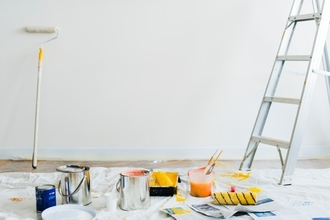For the second blog in my Construction series, I look at the simple home renovation.
I have helped many of my clients turn the simple renovation into two things;
- The home of their dreams
- The foundation of a property portfolio
These are their real renovation stories (used with permission, thank you to all who have let me share your inspiring stories!)
A basic example to start: Consider a modest renovation spending less than 10% of the value of the house – say $50k
You have a few contacts lined up who can work for a good price, all you need is some money from the bank and then you can spend that at discounted rates with your contacts on “weekend rates”
Easy!
Wrong!
(First and foremost let me state, and then put to one side, that all renovations should be carried out by licenced tradespeople and with council approval as appropriate. Cutting corners could make your house a legal minefield for you later at point of sale.)
Let’s look more closely at how we get that $50k.
It can come in three ways;
- Your own cash savings.
- Existing equity in your home.
- The improved value of your home, once renovations are completed.
Option 1.
If it comes from your own cash savings – then it’s your money and, after a trip to Bunnings, fire up the barbie, fill the fridge and your weekend plans are on track. (I’m simply repeating here what MOST of my clients say to me!) You can of course engage a builder by way of a fixed price contract and proceed with him or her on a cash basis.
And a real example…
“Stacey and Travis are currently purchasing their second home. They started by improving the value of their first home with their own savings and ingenuity. That improved its value to the point where are they currently taking equity from that property to buy their next home.”
What if we need to borrow the money?
Option 2:
Exactly what is “equity” in your home? If your home is worth $500k and your home loan is now $350k, you have $150k in “equity”. You can realise all of this (less selling costs) by selling the property. This is not what most people think of though when they talk of the “equity” in their home. Most people are meaning the “usable equity”. Assuming you qualify on other lending criteria too you can borrow;
- Up to $400k (80%) – giving you $50k to spend
- Or $450k (90% if you pay mortgage insurance) – giving $100k to spend
90% is an absolute limit. Even if you had a 95% loan when you first bought your house, we can only do 95% ONCE.
If you speak with me and we ascertain that you can qualify for the higher borrowing, then we can go to the bank and ask for $50k for some “minor home improvements”. If I’m persuasive and charming (the latter is unlikely… ha-ha … nothing wrong with humour in a blog) then the bank may even land $50k in your nominated bank account after the loan is approved and we are back to …
“It’s your money, fire up the barbie, fill the fridge and your weekend plans are on track!” You can of course engage a builder by way of a fixed price contract and proceed with him or her on a cash basis.
If the work involves significant structural work – let’s say it’s now $100k that we need, then we can go up to 90% and the bank may well still give you control – they may just expect to see evidence of paid invoices. The more money involved the more likely we head into the territory of option 3.
However, although it may seem dauntingly confusing at this stage – it’s not as hard as you might think, as Emma and Aaron have found out! Emma, and her partner Aaron, are now renovating their second home. They started with a 2-br unit, put in a Bunnings kitchen and improved the bathroom out of hard saved cash. That improved its value to the point where we could take equity from that property and buy their current home. Once again savings started the renovations and now we are in a position to revalue the properties and take equity out to make further improvements.
Option 3:
Option 3 comes into play for much larger scale renovations, say $150k (we still have our house valued at $500k and a loan of $350k). Final borrowings will now be $500k and clearly this doesn’t work for the bank. How do we proceed? This is still easily done – just with a little more formality.
Chris and Vanessa from Adelaide started with me over 10 years ago buying a “renovators delight”. Careful use of savings applied to a renovation, improved the value so that, once sold, we had the deposit for their next home. Once again a combination of cash and borrowing renovated that home too, allowing it to be sold and give the deposit for their next home in the suburb of their dreams. A rental property was purchased along the way and now, using equity built up over 10 years, they have a portfolio of three properties, having just purchased their next “renovators’ delight”
Michael and Courtney purchased their first home and used their own cash and skill to renovate it. They have just purchased their second using the equity from the first. The renovation this time will be more substantial
How are Michael and Courtney going to renovate it now they are on to bigger things? …
They need to obtain a bank pack for valuation (I say easily … this could take 3-6 months with research and approvals) to do this I need the following:
- Council rates notice.
- Fixed Price Build Contract (plus Variations*see note).
- Building Schedule (your selections and finishes).
- Building Specifications (shows it meets building standards).
- Contract Plans (signed and dated).
- Engineers Report (sometimes this is supplied, sometimes not).
- Council approval.
- Builders Insurance specific to your site.
*Variations are an important pause point – you can make variations to the contract at any time – it’s your house – BUT – if you want the bank to lend for said variations, then I must have these with the build pack.
Any variations that come later (and there are almost always variations) MUST be paid for from your own cash reserves.
Here’s where it gets interesting. Let’s say a valuer estimates the TOC Valuation to be $650k – the required loan is $500k, which is 77%. (Have a read of my previous blog covering contract price and valuation )
The bank approves the loan but this time – there’s no backyard barbie. This time the bank releases money on invoices presented to you by the builder. You sign them to say you are happy with the work, you give that to me, I forward to the bank and the bank pays directly to the builder’s account by a series of what are called “Progress Draws” I will help you with this from start to finish as part of my service offering to you. This Progress Draw stage always feels a bit mysterious – but I’m here as part of your team to take the headaches away and deal directly as the go between for bank and builder.
If the valuer puts a TOC amount of $620k on it (there may have been an inbuilt theatre system for instance) then $500k against $620k is 81%. If you reduce the loan to $496k by putting in $4k of your own FIRST, then everything proceeds as before.
If the valuation comes up much shorter – maybe the record price EVER for a house in your suburb is $580k and the bank is no longer looking at contract price, they are looking at realistic sale price in a default sale, then you would have interesting and difficult choices.
$500k against $580k is 86% – you can still proceed by either paying mortgage insurance or putting in $36k to reduce the loan to $464k (80%) The bank would accept either and then everything proceeds as before.
You might decide that you are overcapitalising your property. If you see valuation figures like the ones immediately prior, it would be prudent to take stock and see if shifting house is a better option from a “value” perspective.
Every situation I have mentioned above I have personally come across – they are not always easy decisions. However, as your broker I am here to make sure that even hard decisions are informed decisions… No question you might have is ever too small for my time.
To finish up, let’s look at one very common question I am asked, especially by First Home Buyers with small deposits. “Can we buy our house, borrow 95% and then borrow another $20k for some immediate renovations?”
The simple answer is no. At 95% your home loan is “full” – there is no “usable” equity.
However, in a rising market such the one we are in, its not a closed door yet. The best strategy is to purchase the home you want, and then continue to save while allowing the value of your new home to increase.
Be patient and I will help guide you through the path ahead.
This series began when I asked two clients what they would like to hear about their home loan – and they said, “how can I get cash to complete my renovation?”
Yes – I have helped many of my clients turn the simple renovation into two things:
- The home of their dreams.
- The foundation of a property portfolio.
I genuinely enjoy being part of the evolution of my clients’ journey to financial security and fulfilment from that simple first home.
Just Ask Alan – Your online mortgage broker.


